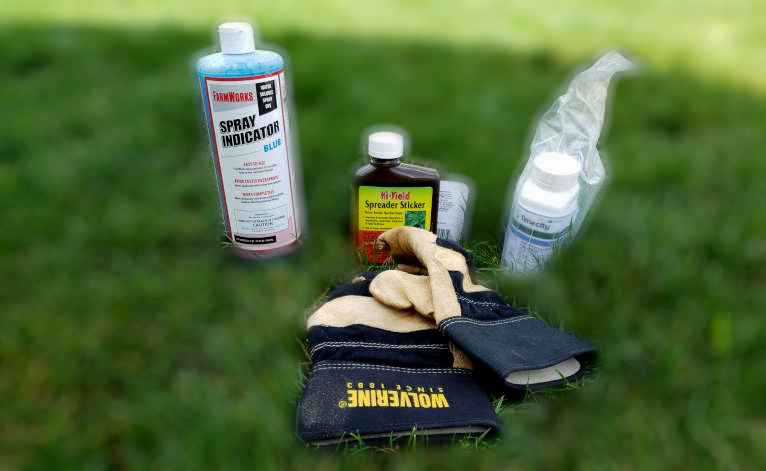I've been spending a lot of time this year trying to get my lawn back into decent shape. Along the way I came across an herbicide called Tenacity (chemical name mesotrione). In this article, I want to walk you through the process and share the good and the bad about using Tenacity herbicide.
What is Tenacity?
Tenacity is a selective herbicide that can be used in either pre-emergent or post-emergent applications. It kills unwanted weeds by disrupting the process of photosynthesis, causing the plans to lose their color and die off. Let me break that down for you.
Selective herbicide means that this is the type of herbicide that will only kill certain weeds and grasses. In other words, this is a product that can be sprayed on weeds in your lawn without killing the grass. You'll need to check the label to be sure that this will be true in your area but it has worked well for me in this regard thus far.
Next, pre-emergent and post-emergent describe when the chemical actually kills unwanted weeds and grasses.
For pre-emergent application of Tenacity, it is absorbed through soil contact as young plants start to grow. The end result is the same — the plants will lose their color and die — but the way it gets into the plant is different.
For post-emergent applications of Tenacity, you're effectively spraying the chemical onto the leaves of the plant, and this is primarily how it is absorbed. For this reason, it is recommended to use an ionic surfactant (this is just a fancy name for another soap-like chemical that allows the Tenacity to stick to the leaves better than if it is used on its own). Some of the chemical will be absorbed into the plan through the soil but that is not the primary means of absorption in post-emergent applications.
How do you apply Tenacity?
Tenacity is applied through a pump or backpack sprayer by mixing the product (a small amount - typically one to two teaspoons) with water. Spray indicator dye can also be added into the mixture as well to help ensure that you don't overspray some areas and underspray in others.
As mentioned above, if using Tenacity in a post-emergent fashion, it is suggested that you add some ionic surfactant into this mix as well for better adhesion and effectiveness.
A reapplication of Tenacity is suggested two to three weeks after the initial application. For most of the grasses and weeds I've been targeting (foxtail, crabgrass) I haven't really had to do follow-up applications but perhaps could have gotten better results if it had.
Does Tenacity actually work?
I was skeptical after I applied my first round of Tenacity. I was using it as a post-emergent killer of some stuff that had popped up in early spring. Large patches of crabgrass, foxtail everywhere and plenty of other stuff that I can't even name.
I have used other more common post-emergent herbicide sprays in the past (products from Bayer, Round-Up, etc.) and generally saw quick results with them. You could tell the plant was affected by the next day in a lot of cases.
That's now how Tenacity worked for me.
It takes about five days before you'll even notice a change in the appearance of the weeds that you sprayed. Once five days hits you'll begin to notice that the plant will lose its color (a process called bleaching) slowly over the course of the next several days.
It won't be until one to two weeks later that you'll notice the weeds actually dying off and disappearing.
Generally, once they start to die the process feels like it goes by quickly but you'll be waiting much longer for your yard to clear with this product than you would with one of the more standard, off-the-shelf options.
Having said that, Tenacity doesn't have the same harsh chemical presence that those other products have.
Recently a neighbor of mine a few houses down was using Ortho Weed-B-Gon on his lawn. I could smell it clear as day — the chemicals used in those products have very distinct smells. That is definitely not the case with Tenacity. You won't really notice an odor from Tenacity itself. If you add in some of the other stuff (marking dyes and surfactants) then you'll experience a slight odor but nothing compared to those other products.
That is not to say that it is necessarily safer or better. I am definitely not a scientist or chemical engineer. But just based on how I felt being around the product I would say I was much more comfortable working with Tenacity than I have been working with other selective herbicides in the past.
